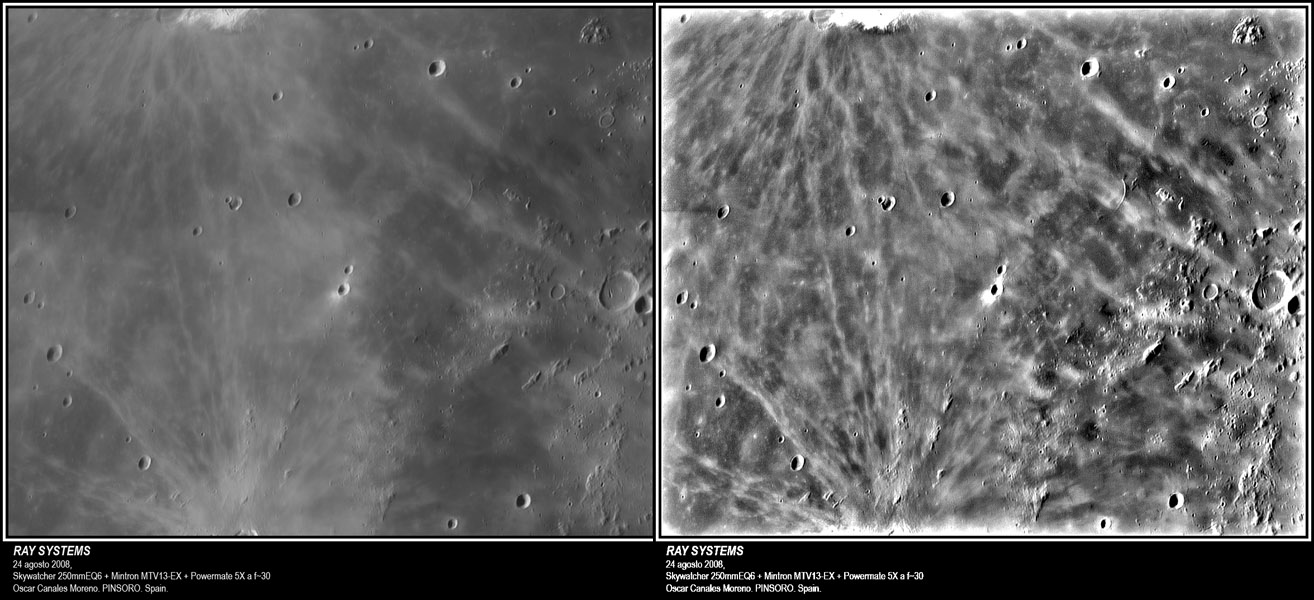Difference between revisions of "August 9, 2018"
(Created page with "__NOTOC__ =Classification Anyone?= Originally published May 27, 2009 <!-- Start of content --> <!-- ws:start:WikiTextHeadingRule:2:<h1> --> <!-- ws:start:WikiTextLo...") |
|||
| (One intermediate revision by the same user not shown) | |||
| Line 25: | Line 25: | ||
<br /> | <br /> | ||
<strong>Related Links</strong><br /> | <strong>Related Links</strong><br /> | ||
| − | Rükl plate [ | + | Rükl plate [https://the-moon.us/wiki/Rükl_19 19] & [https://the-moon.us/wiki/Rükl_30 30]<br /> |
<br /> | <br /> | ||
<p><b>Yesterday's LPOD:</b> [[August 8, 2018|Hommage]] </p> | <p><b>Yesterday's LPOD:</b> [[August 8, 2018|Hommage]] </p> | ||
Latest revision as of 19:36, 18 August 2018
Classification Anyone?
Originally published May 27, 2009

image by Oscar Canales Moreno, Pinsoro, Spain. Original on left, hyper-enhanced on the right.
Rays and mare ridges. They may be the last significant landform types on the Moon that don't have classification systems. And Oscar's
image suggests why ray classification is so hard. First, an aside, notice how Oscar exercised extreme restraint by not including the
spectacular craters these rays come from; by doing that he allows us to concentrate more on the rays themselves. Oscar made a tonally
pleasing image (left), which I stretched beyond prudence to better depict ray characteristics (right). Copernicus' rays - the crater is to the
right - are broad, bright and relatively massive. Those from Kepler (below) are much narrower and less conspicuous. And the ones from
Aristarchus are a little wider than Kepler's and seem to be more closely spaced. So are width, brightness and spacing measurements that
should be used to classify rays? I don't think anyone knows until a number of rays systems are tried. Probably also want to include ray
length (which was found decades ago to be a function of crater diameter). And ray brightness also correlates with crater age. With so many
variables it may be difficult to really understand rays.
Chuck Wood
Technical Details
24 Aug 2008 around 3h50mUT. Newton Skywatcher 250mmEQ6 f: 23,5 + Mintron 13v6-EX videocamera + Canon MV500i Red Filter W25 +
Powermate 5x. VirtualDub and Avisynth for deinterlace and video capture. Dark and flats performed with iPrep. Registax5 + Avistack 1.74 +
Photoshop + Focus Magic. 6 images mosaic with PTGui, 300/1500 images at 50 img/seg
Related Links
Rükl plate 19 & 30
Yesterday's LPOD: Hommage
Tomorrow's LPOD: Threesome
COMMENTS?
Register, Log in, and join in the comments.



